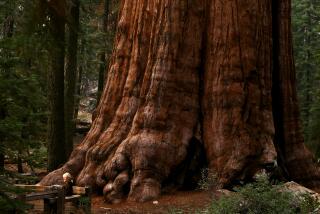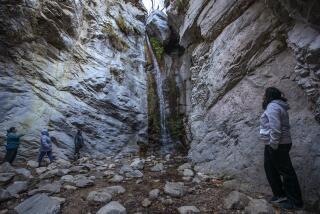Enjoy the National Park Service? Here’s who to thank
If you like today’s national parks, be grateful that industrialist and native Californian Stephen T. Mather hit it big on borax mining in the 1890s.
Give further thanks that Mather’s delicate mental health lasted long enough for him to launch a second career and pick a protégé.
Mather and fellow Californian Horace M. Albright together helped create, then shape the park system.
Mather, born in San Francisco and an 1887 graduate of UC Berkeley, worked as a reporter in New York for six years, then followed his father into the mining industry, where he showed great marketing savvy. He is credited for popularizing 20 Mule Team Borax, a multiuse household product that endures today.
By 1915 Mather was a “retired” millionaire in his 40s, known for his gregarious ways and love of hiking. That year, he took a job as assistant to the secretary of the Interior and started lobbying for the creation of a national park system.
The park situation was strange. Congress had set aside Yellowstone as the first national park in 1872. Several dozen more parks and monuments were added, including Yosemite in 1890. But until the arrival of Mather and his protégé, Albright, Congress had been unwilling to create an agency to oversee them.
That changed with the creation of the National Park Service by President Woodrow Wilson on Aug. 25, 1916. In 1917 Mather became the first NPS director, charged with conserving “the scenery and the natural and historic objects and the wild life therein and to provide for the enjoyment of the same in such manner and by such means as will leave them unimpaired for the enjoyment of future generations.”
At Western parks such as Yosemite, Sequoia and Glacier, Mather put up his own money to buy key land for park expansions. He also took the first steps toward eastward expansion. He did all this despite occasional leaves (sometimes months on end) to grapple with bipolar disorder.
Ken Burns’ 2009 television documentary on the parks noted that Mather twice attempted suicide. Yet he held the top NPS job through 12 years and three presidents until he suffered a stroke and stepped down in 1929. He died in 1930 at age 62, after a second stroke.
Mather was a hard act to follow, but Albright, the second NPS leader, had already been a key figure in Mather’s success.
Albright was another California-born Berkeley grad, in the class of 1912. Although 22 years younger than Mather, Albright reached Washington first, having landed an Interior Department job at age 23. Once Mather arrived, Albright became his wingman.
When depression sent Mather into seclusion soon after the park service’s creation, Albright, still in his 20s, quietly took over for two years. He went on to run Yellowstone as superintendent from 1919 to 1929.
His tenure at the helm of NPS was relatively short (1929-33). But his impact was immense.
In 1933, five weeks into the first term of President Franklin Delano Roosevelt, Albright arranged to sit by FDR on a Sunday drive to see some proposed parkland in Virginia. Then he steered the conversation to history.
By the end of the drive, Albright had persuaded FDR to transfer 56 national monuments and military sites to NPS control from the Forest Service, the War Department and the National Capital Parks.
Without that bold turf grab, the NPS might never have grown into its contemporary role as the nation’s keeper of nature, monuments and history.
“We had to have people in the parks,” Albright told an L.A. Times interviewer in the 1980s, “because that was the way Congress judged the parks — on how many people used them.”
In 1933, Albright left the government and spent the rest of his career in private industry. He died in North Hollywood in 1987. He is buried in Forest Lawn, Glendale.
christopher.reynolds@latimes.com
ALSO
The National Park Service: Some facts and figures
Our favorite stories from national parks of the west
California’s national parks: A photographic history seen through The Times’ archives
More to Read
Sign up for The Wild
We’ll help you find the best places to hike, bike and run, as well as the perfect silent spots for meditation and yoga.
You may occasionally receive promotional content from the Los Angeles Times.







